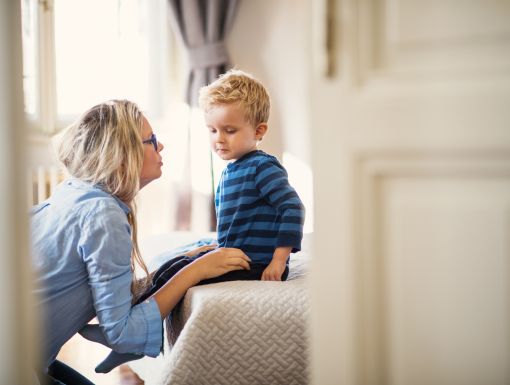
6 Tips to Help Your Kid Adjust to Masks
Wearing masks has been a huge adjustment for many people, but even more so for young children or those with disabilities who may not understand the purpose behind them. Sometimes it can be hard for children to effectively communicate how they are truly feeling, and instead, they may be fussy, cry or act out in response to having to wear a mask. If your child is expressing feelings of discomfort or anger due to wearing a mask, here are some ways to help.
Choose a comfortable mask and enlist help from other children
Let your child choose between a few mask options. They may prefer the way one looks or feels. Have your child try on a few mask options and share which feels the least constricting. Ask them how it feels on the bridge of their nose, on the chin, whether it restricts their sight and how it feels when breathing. Sometimes it can be hard to communicate what they do or don’t like about a mask, but by giving them options, you will easily be able to see which characteristics they prefer. If your child is not able to communicate or decide what’s uncomfortable about a particular mask, another child can help you troubleshoot which masks to avoid and which are comfortable.
Practice in small doses using positive reinforcement
Practice wearing a mask a few times each day in the comfort of your home while your child is relaxed and free to do other activities they enjoy. Set a timer for a very short period of practice time – about a minute or so. Give an explicit instruction, “First mask, then snack time,” or, “When the timer goes beep-beep, we take the mask off and eat a snack!”
Let your child continue a favorite activity while practicing wearing the mask, such as playing video games or having you read their favorite book to distract from the mask as much as possible and create positive associations with wearing a mask.
Use gradual desensitization
If your child is very resistant, you may want to gradually desensitize them to masks. Here are some suggested steps:
- Have the child hold and touch the mask
- Touch the mask to your child’s face for a few seconds
- Hook elastic around the ears
- Keep the mask on for a brief period of time
- Gradually wear the mask for longer
These are simply suggested steps and can be broken down even further and personalized to your child’s needs. Practice a few times per day. Graduate to the next step once your child looks relaxed at the current step.
Create a story about masks
Gather a few pictures of your child and add a mask to these photos. You could use paper and glue to attach a mask to the photo or use Photoshop. Use these pictures to create a mini book or story that talks about why mask-wearing is important and how it benefits them. You could also include characters that your child loves. If your child loves Baby Shark, have sharks wear masks in the story. Write the story in first-person, using short sentences. For example, “I am safe in my mask! A mask is fun because I feel like a superhero,” or “I am like baby shark. Baby shark wears a mask and I wear a mask!”
Tolerate others wearing masks
Children may be fearful of others wearing masks because masks and face coverings are associated with people who provide less than comfortable experiences for children, such as dentists, doctors, etc which are often time very challenging appointments and require assistance from another adult and sometimes even sedation. Since these appointments are challenging and only occur once or twice a year, the child does not get enough practice and exposure in order to be able to tolerate others wearing a mask or establish positive associations with masks.
Explain to your child the importance of wearing a mask and show them that most people are having to wear them now. This will shift their mind’s from thinking that only a few people in certain positions wear masks, to everyone must now wear masks to keep people safe. Its even better if they can associate people wearing masks with people they love by noticing their friends and family members also wearing them.
Make wearing masks fun
Take some time out to associate your masks with playtime and being silly. Here are some ideas:
- Whoever is wearing the mask gets to be “it” for hide and go seek, or whoever is wearing the mask gets to choose the movie for family night.
- Place masks on their favorite stuffed animals.
- Draw different picture scenes and cut them out, including masks on animals and characters. Cut them out and hang them on the walls. You could also make playdoh masks for fun.
- Collect “dollars” for every person your child sees with a mask. How many dollars did you get after going to the grocery store?
The information in this blog post is accurate at the time of publication. However, as the situation surrounding COVID-19 continues to change, it's possible that information has changed since being published. While Ochsner Health is trying to keep our blog posts as up-to-date as possible, we also encourage readers to stay informed on news and recommendations by using the CDC website.



